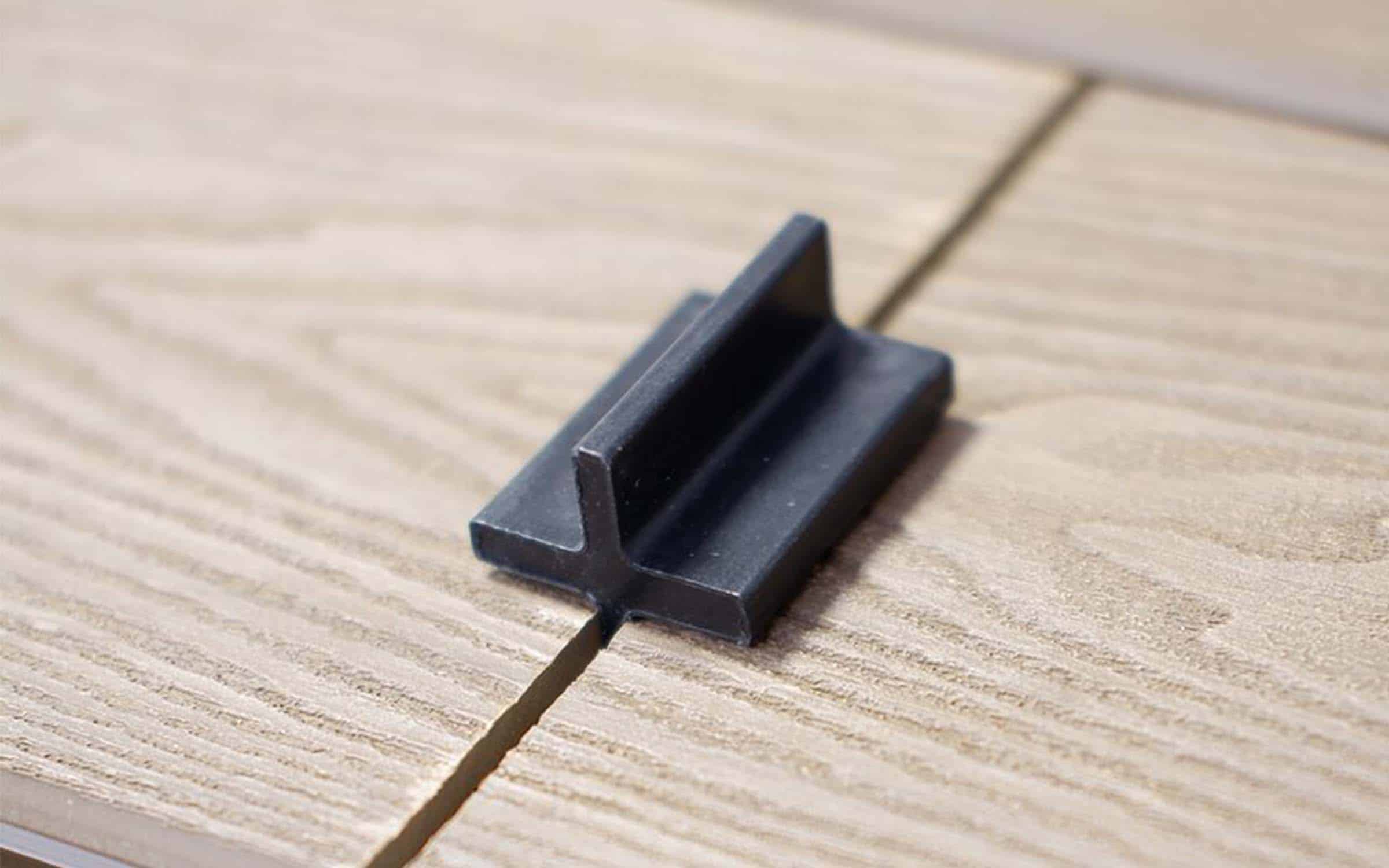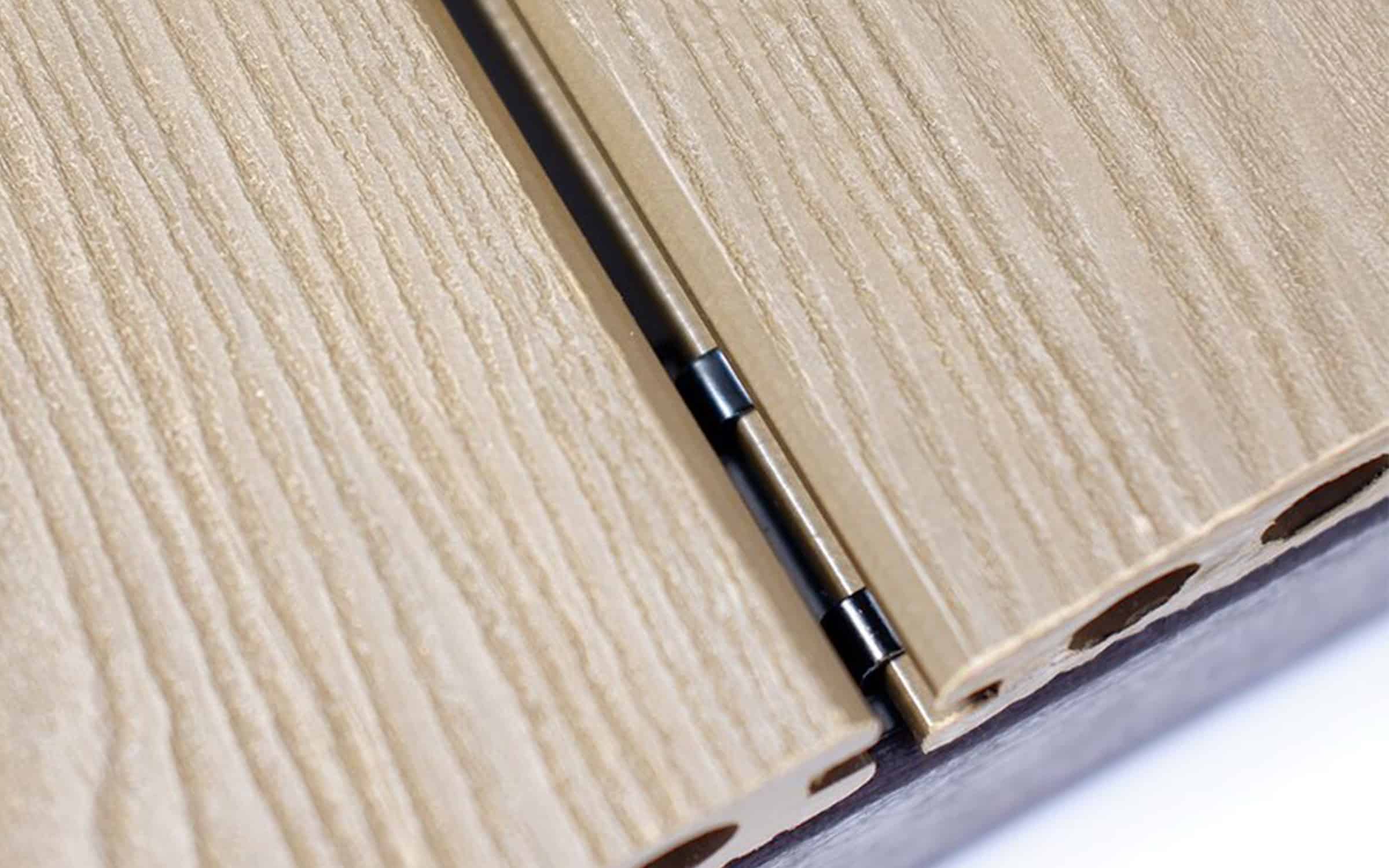Most of us are aware that timber will naturally swell and shrink in changing temperatures, but does composite decking expand and contract?
At NeoTimber® we are experts in the design of alternative timber products. We are aware that like timber, composite decking can expand and contract. We have worked carefully to design a product which performs well in all conditions, and which can handle the very worst of the elements, even the changeable British climate. NeoTimber® composite decking is engineered to adapt to changing conditions. As a direct result of temperature change our composite decking will both expand and contract as temperatures rise and fall. For this reason, we insist that installers fit decking with appropriate gaps to allow for this variation to prevent buckling, bowing and cracking.

Why Does Composite Decking Expand & Contract Due To Temperature?
Composite decking is constructed from a composite blend of wood fibres and plastic polymers. Owing to the high percentage of plastic content (around 40%), NeoTimber® composite decking is reactive to changes in temperature. Both wood and plastic are prone to a degree of flexing caused by changing weather conditions, impacted mainly by temperature change and the amount of moisture the boards have absorbed. Just as wooden decking naturally expands when wet or exposed to heat, composite decking also undergoes changes as temperatures fluctuate.

When Does Composite Decking Expand?
Unlike timber, composite decking does not expand when wet. Engineered to work with extreme temperatures, composite decking boards have the flexibility to expand within limited parameters without affecting the structural integrity, ensuring sturdy solid decking for many years to come.
When Does Composite Decking Contract?
As temperatures drop, composite decking contracts. The cells within both the plastic and the wood fibres pull closer together causing shrinkage. Both expansion and shrinkage occur within a known tolerance. Our composite decking and the accompanying decking fixings are designed to work within these tolerances to accommodate this fluctuation.
Expansion & Contraction Should Be Considered During Installation
Just like a metal bridge, a composite decking board will expand when it gets warmer. The “Golden Gate Bridge” in San Francisco has been monitored for movement during fluctuation in temperature. It has been found that the cables which support the deck expand and contract constantly, causing the height of the deck where the road is to vary in height by 16 feet between coldest and highest temperatures. Had these tolerances not been taken into consideration at the design and installation phase, the roadway would have split resulting in a huge disaster.
Naturally, composite decking does not expand or contract anywhere as near as much as the “Golden Gate Bridge” but the same principles still apply. We have engineered our decking to expand and contract, working with the natural properties of the composite materials. This fluctuation prevents the deck boards from warping, bowing and splitting. Therefore, allowances must be made to accommodate this.
To ensure the effects of contraction and expansion don’t damage your boards, use our specially designed clip system. Our decking fixing system uses clips which sit in grooves. These are built to a tolerance giving ample space for the board to expand and contract.
TEMPERATURE GUIDANCE TABLE
| Outside Temperature | End-To-End Gap |
|---|---|
| Below 4°C | 6 mm |
| Between 4°C – 25°C | 3 mm |
| 26°C or over | 1 mm |
Butting boards up together create an aesthetically pleasing decking as there are no gaps but doing so may prove to be a costly mistake. For instance, two boards butted up together length ways will expand towards each other, causing the boards to be pushed up, out of position and buckle at their ends. A similar result occurs when boards are laid butted up parallel. Boards bend, bow and break when not given sufficient room for expansion.
In addition to this, failure to install the boards correctly following NeoTimber’s installation guidelines will result in a voided warranty meaning any damage incurred due to incorrect installation will not be covered and so any replacement boards will be charged to you.
NeoTimber’s Products Are Proven To Expand Less Than Other Composite & uPVC Equivalents
There are two primary reasons why NeoTimber® undergoes a lesser fluctuation than other products and composite brands:
1 NeoTimber® supply composite deck boards in 3.6m length, as opposed to a 4.2 or 4.8m length as is favoured by many suppliers. Not only does this make storage and installation easier, but it also means that fluctuation in the boards is less due to less mass within the boards. Less material results in less expansion… simple.
2A significant number of competitors favour a higher plastic to wood ratio than NeoTimber®. NeoTimber® composite decking is made of 35% plastic, 60% wood fibres and 5% bonding agent. A greater plastic ratio results in greater fluctuation and greater expansion and contraction of the boards when exposed to high and low temperatures.
Need Further Support or Advice?
If you’ve still got questions that have not been answered here, or you would like additional advice,
support or assistance then please give one of our friendly experts a call and we’ll be happy to help.
Just give us a call on 01530 382 180.
